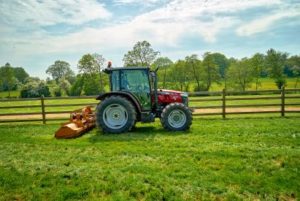Autumn Paddock Maintenance

By planning the maintenance of your paddocks in September/October you can help provide the best use of the grazing land you have. This will not only ensure the health and wellbeing of your horse, but will also be more aesthetically pleasing when compared to the usual churned up mud pits seen throughout the winter.
FERTILISING – Like any plan, grass requires nutrients to grow. Autumn is often seen as a time where you will again be applying fertiliser to your fields. The aim is to produce a tightly knitted grass sward with not too much top growth. This will help areas against poaching. This is what Suregrow will produce for you.
WEED CONTROL – While it is more beneficial to control weeds during the spring months, it is also possible to control them as we get to the end of the summer.
If you still have weeds to control we would advise waiting for the autumn flush which is when new weeds start to germinate due to the increased soil moisture. Where possible we would advise you consider cultural or mechanical methods of controlling weeds. Mowing & harrowing can help reduce weed populations.
Ragwort should be dug out & burnt. Do not leave any roots. Never cut or top. Ragwort when dry is poisonous to horses. Talk to Paddock Agronomist Advisors about what spray to use to kill your different weeds.
Other things to consider when spraying weeds are spray enhancers such as dye-markers & adjuvant oils. Blue dye marker can be mixed with the weed killer to temporarily stain the sprayed area blue. This will help you avoid over-spraying the same area twice, or missing patches. An adjuvant oil can be mixed with the weed killer & can help penetrate waxy or hairy leaves enhancing its affect by up to 30%.
DRAINAGE & COMPACTION OF PADDOCKS – Land that gets very wet is susceptible to poaching; & poached fields can encourage problems with your horse’s health such as foot problems; mud fever or thrush. If your field has poor drainage & you are unable to do any permanent fixes, a temporary measure could be a mole plough or deep tine aerate. Most local contractors or farmers should be able to help you with this. This will also help grass be able to root deeper & in turn withstand damage to frost, drought & grazing better.
Horse owners will usually know the ones who are more likely to destroy fields & where possible these could be catered for by putting in fields which have better drainage or are on lighter land. If you are able to do so, we would recommend that 1 horse should be grazed on a minimum of 1 acre, although we fully understand not everyone has this luxury.
GRAZING GOLDEN RULE – Keep grass at least 3 inches tall. Grass below 3 inches stresses the plant by reducing the leaf surface which grasses use to make their own food. Eventually the grass depletes its stored reserves & dies leaving bare spots in your paddocks. Suregrow will keep grass 3 inches tall.
Photograph taken at Davison Equestrian